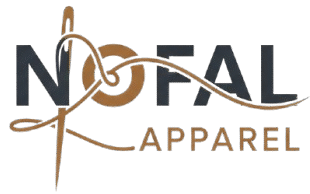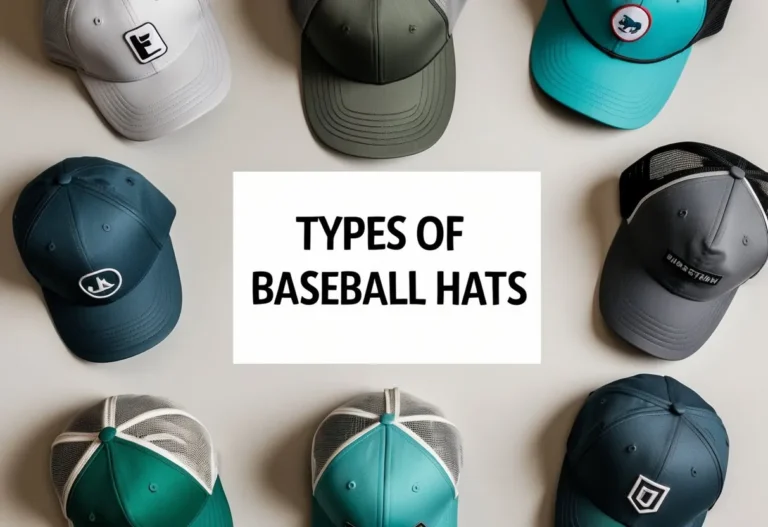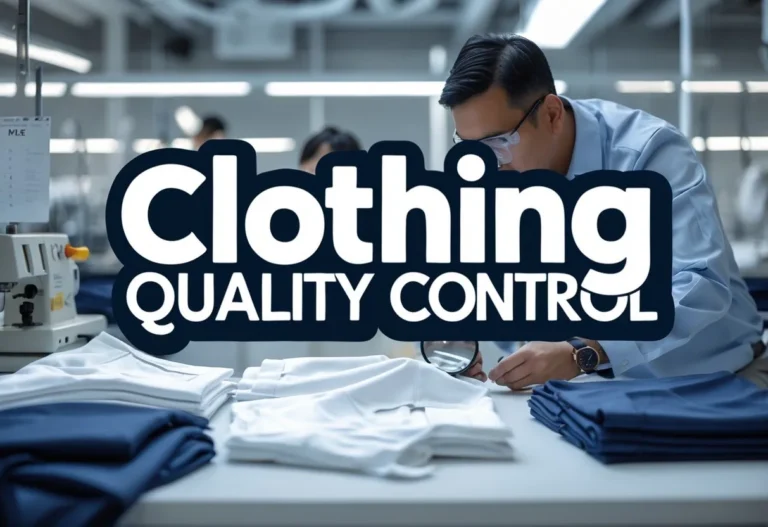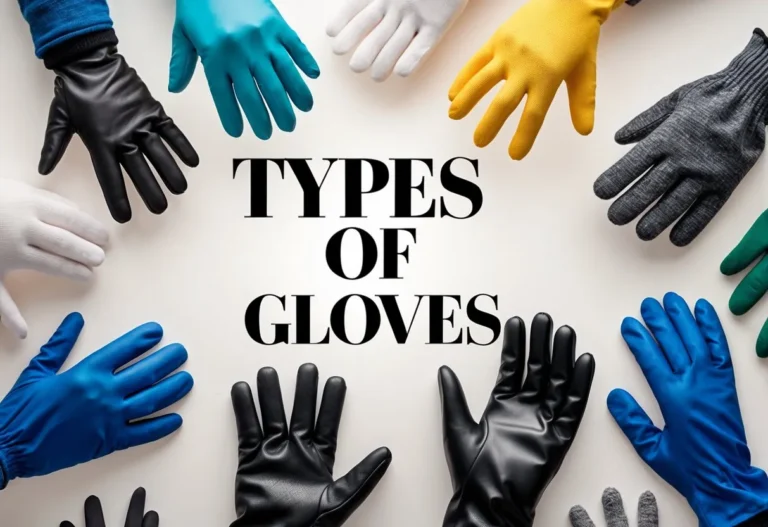The fashion industry is competitive and fast-changing, making effective marketing essential for any clothing brand’s success. To stand out, brands need clear strategies that connect with their audience, build strong brand identities, and drive sales consistently. The Clothing Marketing Strategies to Grow Your Fashion focus on combining digital tools, social media, influencer partnerships, and smart pricing to create lasting engagement and growth.

Fashion brands must understand their customers deeply and deliver consistent messaging across all channels. Using social media platforms with targeted ads and collaborations helps reach potential buyers directly. Additionally, brands that optimize their online stores and follow up with personalized communication tend to increase conversions and customer loyalty.
A strong marketing plan also involves expanding brand visibility through events and partnerships. This approach not only introduces the brand to new markets but also strengthens its reputation. By blending these strategies, fashion brands can maintain relevance and build a loyal customer base.
Key Takeways
- A clear understanding of the audience drives effective marketing choices.
- Consistent branding and social media use boost customer engagement.
- Combining digital tactics with partnerships helps grow sales and visibility.
Understanding the Fashion Market and Target Audience

A clothing brand must know its market and customers well to succeed. This means understanding who buys their products, what trends affect the industry, and how to group customers based on their needs and habits. Clear knowledge of these areas helps brands create focused marketing strategies that connect with the right audience.
Conducting Market Research for Clothing Brands
Market research is the process of gathering data about consumers and competitors in the fashion market. Clothing brands use surveys, interviews, and digital analytics to collect demographic and behavioral information. This data reveals who their customers are, what they want, and how they shop.
Brands analyze competitors to identify gaps in the market. This helps them find unique selling points and avoid crowding crowded niches. Research also tracks pricing, quality, and styles that customers prefer. Brands can then adjust their products or marketing to fit these findings.
Market research is ongoing because the fashion industry changes fast. Continuous updates help brands stay relevant and make smart decisions about collections, promotions, and sales channels.
Identifying Consumer Trends in the Fashion Industry
Consumer trends show what styles, colors, and fabrics shoppers want. They reflect broader changes like sustainability, comfort wear, or tech integration. Brands study these trends to meet demand and attract customers.
Tracking trends involves following fashion shows, industry reports, and social media buzz. Trends can shift quickly, so brands need to adapt their offerings promptly. For example, eco-friendly materials have become a major focus as consumers seek sustainable fashion.
Understanding consumer behavior, such as shopping habits and preferred platforms (online or in-store), is also crucial. Brands that spot emerging trends early can position themselves as leaders and capture market attention.
Segmenting and Creating Buyer Personas
Segmenting divides the fashion market into groups based on age, income, style preference, or lifestyle. This lets brands tailor marketing efforts and designs to specific audiences.
Buyer personas are detailed profiles of ideal customers. They include demographic data, buying habits, and motivations. For example, a persona could be a young professional focused on affordable, stylish workwear.
Creating personas helps brands focus campaigns and product development. It increases marketing efficiency by targeting people most likely to buy. Personas also guide messaging, making it more relevant and convincing.
Effective segmentation and personas allow a clothing brand to meet diverse needs with precision, improving customer engagement and loyalty.
Building a Distinctive Brand Identity

A strong brand identity sets a clothing brand apart and builds customer loyalty. It must clearly express what the brand stands for, how it looks, and the story it tells. These elements work together to attract the right audience and create lasting connections.
Defining Brand Values and Vision for Clothing Marketing Strategies
Brand values are the core principles guiding a clothing brand’s decisions and behavior. These values reflect what the brand believes in, such as sustainability, quality, or innovation. A clear vision outlines the brand’s long-term goals and purpose.
Defining these helps the brand stay focused and consistent. It also helps customers understand what the brand stands for, which strengthens trust and loyalty. For example, a brand that prioritizes eco-friendly materials should make that value clear in every message and product choice.
Crafting a Memorable Visual Identity
Visual identity includes logos, color schemes, typography, and imagery. These elements must be unique, consistent, and aligned with the brand’s values and target audience. Visuals should be easy to recognize and evoke the brand’s personality.
A cohesive visual identity helps customers remember the brand and feel connected. It should work across all platforms, from product tags to social media pages. Consistency in visuals shows professionalism and builds credibility in the competitive fashion market.
Communicating Brand Story and Mission for Clothing Marketing Strategies
The brand story explains why the clothing brand exists and what makes it special. It connects with consumers emotionally by sharing the brand’s origins, challenges, or inspirations.
The mission statement clearly states the brand’s purpose and promises to customers. Both story and mission should be authentic and consistent across marketing channels. This honest communication engages customers and encourages brand loyalty, turning buyers into long-term supporters.
Leveraging Social Media Marketing and Platform Strategy

Effective social media marketing for fashion brands requires targeted platform choices, striking visual content, authentic user engagement, and a steady posting routine. Each of these elements helps brands reach their audience, build trust, and encourage sales.
Choosing the Right Social Media Platforms
Fashion brands should select platforms that match their target audience and content style. Instagram is key for its strong visual focus, ideal for showing product photos, reels, and stories. It allows shopping directly from posts, making it easier to convert viewers into buyers.
TikTok excels with short-form videos and viral challenges. It connects brands with younger generations through creative, trend-driven content. Facebook remains useful for targeted ads and community groups, especially for broader or older audiences.
Brands that choose platforms wisely use each channel’s unique features to maximize reach and engagement while avoiding wasted effort.
Developing Visual Content for Engagement
Visual content drives interaction on fashion social media. Professional photos, videos, and well-edited reels showcase styles and tell a story. Short-form videos work well on TikTok and Instagram Reels, capturing attention and mimicking how users browse content.
Brands should use consistent branding in colors, filters, and layouts to build identity. Mixing formats is important: pictures display details, videos show movement and style, and live streams create real-time experiences that boost engagement. Styling tips or behind-the-scenes clips add value and deepen interest.
High-quality visuals paired with clear calls-to-action help turn casual scrollers into customers.
Building Social Proof and User-Generated Content
Social proof builds trust by showing real people enjoy the brand. Encouraging users to share photos and videos wearing products creates authentic content that others find relatable. Hashtag campaigns and style challenges amplify this effect.
Partnering with influencers who align with the brand voice adds credibility and broadens exposure. Highlighting user-generated content (UGC) on the brand’s pages encourages more followers to participate, creating a loop of engagement.
Feature UGC regularly to humanize the brand and make followers feel involved in its story.
Growing a Consistent Social Media Presence
Consistency in posting keeps a fashion brand visible and relevant. Brands benefit from creating a content calendar to plan regular posts, balancing promotional and interactive content.
Consistency also means engaging with followers through comments, messages, and shares. This interaction strengthens community bonds and loyalty.
Frequency matters—posting too little reduces momentum, while overposting can annoy followers. Finding the right rhythm and sticking to it helps maintain steady growth and keeps the brand top of mind.
Influencer and Partnership Marketing

Influencer marketing in fashion requires careful planning and clear focus. Choosing the right people to represent the brand and managing partnerships well can build genuine connections with customers. Success relies on matching influencers with brand style, using smaller-scale influencers effectively, and maintaining strong collaborations over time.
Selecting Relevant Influencers and Fashion Bloggers
Finding the right influencers means looking beyond follower counts. The best matches reflect the brand’s style and values. For fashion brands, the influencer’s aesthetic and audience must align closely with the product.
Fashion bloggers and influencers who regularly attend fashion shows or create style guides add credibility. Reviewing their past posts helps ensure the partnership feels authentic and engaging.
Brands should prioritize influencers with high engagement rates and a loyal audience over those with just large followings. Authenticity drives trust and better customer response. Research tools and influencer marketplaces can help find these fits.
Micro-Influencer Strategies for Fashion Brands
Micro-influencers have smaller but highly engaged audiences, typically between 1,000 and 100,000 followers. They are effective for fashion brands aiming at niche markets or local communities. Their everyday style content resonates more naturally with followers.
Using many micro-influencers spreads brand awareness organically. This strategy builds trust through real-life styling rather than polished ads. Many brands supply free clothing to these influencers in exchange for honest, user-generated content.
However, this approach works best when a brand has the resources to manage multiple relationships. It is less fitting for high-end brands that need expertly curated messaging.
Managing Influencer Partnerships and Collaborations
Successful influencer partnerships depend on clear communication and shared goals. Contracts should outline expectations, content types, posting schedules, and allowed usage of content.
Collaborations can include capsule collections designed with influencers or co-branded styling guides that show how to wear key pieces. These joint efforts deepen engagement by combining expert input with the brand’s identity.
Regular monitoring of performance metrics like engagement and sales helps brands refine campaigns. Trust and respect between the brand and influencer promote longer collaborations, which often yield better results than one-off posts.
Driving Sales with Email, SMS, and Content Marketing

Effective sales growth in fashion requires targeted digital communication and valuable content. Using personalized emails, timely SMS, and engaging blog and video content helps brands connect with customers and encourage repeat purchases.
Creating Effective Email Marketing Campaigns
Email marketing campaigns work best when they focus on personalization and segmentation. Brands should target specific groups based on past purchases and browsing behavior. This makes messages more relevant and increases engagement.
Offering exclusive discounts and loyalty rewards through emails encourages repeat business. Testing subject lines, send times, and content helps optimize campaign performance.
Instead of high-frequency, broad emails, brands should send fewer, highly tailored messages. This reduces unsubscribes and boosts open rates. Including product reviews and clear calls to action supports conversion.
Utilizing SMS Marketing and Automation
SMS marketing offers direct, immediate communication with customers. It works well for time-sensitive offers, order updates, and personalized reminders.
Automating SMS flows based on customer actions—like cart abandonment or past purchases—maximizes relevance. This method improves customer experience without overwhelming recipients.
Brands should keep SMS messages brief and focused on a clear offer or message. Combining SMS with email boosts overall campaign effectiveness by reaching customers on multiple channels.
Publishing Fashion Blogs and Video Content
Content marketing through blogs and videos helps build brand authority and attract organic traffic. Blog posts about style tips, new collections, or fashion trends engage shoppers while boosting SEO.
Videos, including product showcases and behind-the-scenes footage, provide visual appeal and deeper product understanding. They encourage sharing and can increase time spent on the brand’s site.
Regularly updating blogs and producing high-quality videos keeps the audience interested. This content can be shared through email and social media to extend reach and drive sales.
Optimizing for Conversions and Online Growth

Boosting sales and customer engagement requires precise tactics that improve how visitors interact with a fashion brand’s website and marketing. From enhancing site visibility to tailoring the shopping experience, using data and promotions smartly can increase conversion rates and drive steady growth.
Website Optimization and Search Engine Optimization (SEO)
A fast, easy-to-navigate website with clear product information is essential for turning visitors into buyers. Pages must load quickly, especially on mobile devices, to avoid losing shoppers. Reducing image sizes and using content delivery networks can improve site speed.
SEO brings organic traffic by improving a site’s ranking on search engines. This involves using targeted keywords in product descriptions, titles, and metadata. A clean site structure with clear URLs helps search engines index pages correctly.
Regular updates and high-quality content also support SEO. This can include blog posts on fashion trends or style guides linking to products. These efforts increase visibility and attract visitors with buying intent.
Personalization in Fashion Marketing
Personalization tailors the shopping experience to individual users, increasing their likelihood to purchase. Using customer data, brands can show relevant product recommendations, offers, and content.
AI tools help analyze past behavior to suggest items similar to what customers have viewed or bought. Personalized emails or notifications with exclusive deals improve engagement.
Effective personalization boosts average order values by encouraging customers to try more products. It also increases return visits by making shoppers feel understood and valued.
Utilizing Analytics to Improve Conversion Rates
Analyzing customer behavior on the website reveals what works and what does not. Metrics like bounce rate, cart abandonment, and conversion funnels help identify roadblocks.
Brands can track how different channels perform, such as social media ads, email campaigns, or organic search. This data guides where to invest marketing efforts.
A/B testing on website elements, including calls to action and layout changes, helps optimize the user experience. Continual analysis and adjustment lead to steady conversion improvements.
Implementing Special Offers and Sales Promotions
Limited-time deals, flash sales, and discount codes compel shoppers to buy faster. They drive urgency and increase conversion rates by tapping into customers’ fear of missing out.
Bundles or “shop the look” options encourage larger purchases by making outfit buying easy. Free shipping offers remain a powerful incentive for online shoppers.
Clear communication of terms and easy access to promotions on the site and in marketing campaigns ensure customers don’t miss deals. Tracking which promotions perform best helps brands plan future offers.
Expanding Brand Awareness Through Events and Marketplaces

Building brand awareness requires targeted efforts that create meaningful customer interactions and widen a brand’s presence. Fashion brands can benefit from real-world events and digital marketplaces to reach diverse audiences and showcase their products effectively.
Hosting and Participating in Fashion Events
Participating in fashion shows, trade fairs, and industry events helps brands create buzz and build credibility. These events allow direct interaction with consumers, media, and buyers, which strengthens brand recognition.
Hosting an event gives a brand control over the experience. It can highlight new collections, tell a brand’s story, and create memorable moments. Effective event marketing includes inviting influencers, using strong visuals, and aligning the event theme with the brand identity.
Well-executed fashion events also generate media coverage and social media engagement. This drives post-event advertising, boosting ongoing visibility. For emerging brands, events can fast-track growth by connecting them to key industry players and customers.
Launching Pop-Up Shops and Experiential Campaigns
Pop-up shops offer a temporary retail space that can attract attention in high-traffic areas. These shops provide hands-on product experience, which builds trust and encourages purchases.
Experiential campaigns engage customers with interactive displays, workshops, or limited-edition releases. These tactics deepen emotional connections and can highlight aspects of product development, such as craftsmanship or sustainability.
Pop-ups and experiences create urgency through limited-time availability, increasing foot traffic and sales. They also collect customer data and feedback, useful for future marketing campaigns and product innovations. Brands can then leverage this insight for better personalization in advertising.
Exploring Online Marketplaces for Broader Reach
Online marketplaces like Amazon, ASOS, or Zalando expand a brand’s reach beyond traditional channels. They offer access to established customer bases and global markets without the need for physical stores.
Brands should optimize product listings with clear images, accurate descriptions, and targeted keywords to improve search visibility. This ties into SEO strategies and supports higher conversion rates.
Selling on marketplaces can complement a brand’s own website sales and diversify revenue streams. It also provides valuable data on customer preferences and buying behavior, informing product development and marketing decisions.
Leveraging marketplaces requires strong logistics and inventory management to maintain customer satisfaction and protect brand reputation. Clear policies and consistent branding help ensure a positive purchasing experience.
Frequently Asked Questions
Clothing Marketing Strategies for fashion brands uses targeted social media tactics, clear brand identity, and consistent messaging. Measuring performance and choosing the right partners also play a key role in growing a clothing business.
How can fashion brands effectively leverage social media for marketing?
Fashion brands should use platforms like Instagram and Facebook to showcase products visually. Features like Instagram Stories and shoppable posts allow customers to buy directly.
Influencer marketing is powerful on social media. Collaborating with influencers builds trust and increases brand visibility among target audiences.
What are the essential components of a successful marketing strategy for a clothing business?
A clear target audience must be identified first. Consistent branding across all channels helps build recognition.
Pricing should reflect the brand’s value and competition. Also, expanding product ranges can attract more customers and keep the brand relevant.
Which techniques are most effective for branding and promotion in the fashion industry?
Strong visual identity is key. Successful brands maintain a consistent look that customers instantly recognize.
Event sponsorships, influencer partnerships, and product placements in media can boost brand awareness and credibility.
What role do the 5 P’s play in developing a marketing strategy for apparel companies?
The 5 P’s—Product, Price, Place, Promotion, and People—guide decisions. Product design and quality must meet customer needs.
Price must balance competitiveness and profitability. Place involves choosing the right sales channels. Promotion includes advertising and social media. People refers to understanding and targeting the right customer.
How can a clothing brand measure the impact of marketing strategies on sales and customer engagement?
Brands should track sales growth and conversion rates from campaigns. Social media engagement metrics like likes, shares, and comments indicate audience interest.
Customer feedback and repeat purchases also help measure marketing success.
What are the key considerations when choosing a marketing agency for a fashion brand?
Experience with fashion brands is crucial. An agency should understand the market, target audience, and digital trends.
Clear communication, creativity, and data-driven approaches will help ensure effective campaigns.






